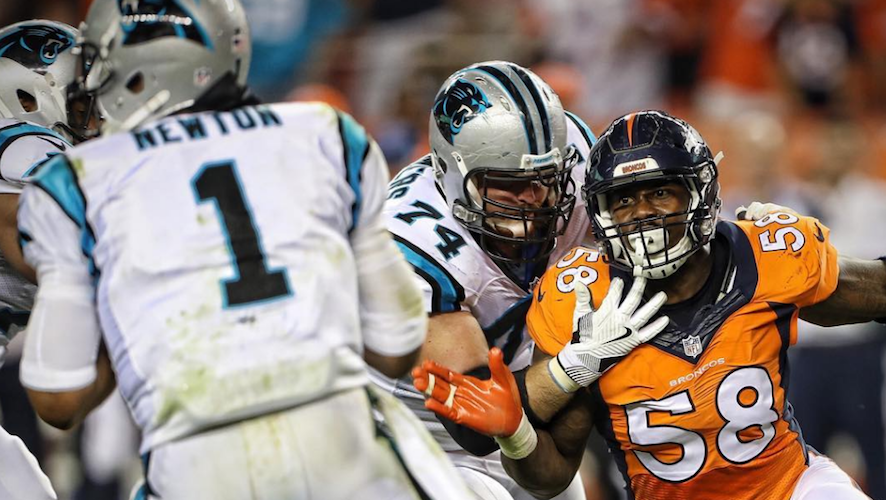The U.S. Supreme Court denied a request to review the NFL’s settlement with between the NFL and more than 20,000 retired players who had accused the league of hiding the dangers of head trauma.
Players who already have been diagnosed with Lou Gehrig’s disease, Parkinson’s, Alzheimer’s or dementia could begin receiving payments for as much as as much as $5 million as part of the estimated $1 billion settlement in 90 to 120 days.
The decision ends a contentious five-year fight between the league and many former players, some of whom are suffering from Alzheimer’s, amyotrophic lateral sclerosis and other debilitating conditions. The settlement covers covers nearly every former player for the next 65 years. The leagues actuaries estimated that just under 30 percent could develop Alzheimer’s or other conditions covered in the settlement. “This is a historical moment for the retired player community who, in the face of great adversity, took on the NFL,” attorney Christopher Seeger, who represented the class of more than 20,000 former NFL players now eligible for payments for the next 65 years, told reporters in a conference call. “Despite the difficult health situations retired players face today, and that many more will unfortunately face in the future, they can have peace of mind knowing that this settlement’s benefits will finally become available to them and will last for decades to come.” The league has estimated that 6,000 former players — or nearly three in 10 — could develop Alzheimer’s disease or moderate dementia. Payments could be as high as $5 million for those with Lou Gehrig’s disease, also called amyotrophic lateral sclerosis, or ALS; the average payout is expected to be closer to $190,000. More than 11,000 have pre-registered for benefits. “We will make sure that every single eligible retired player takes advantage of this settlement’s benefits,” said Seeger. “We will be undertaking a massive education effort to ensure that all former NFL players know about the settlement’s benefits and understand how to file a claim.” The class-action lawsuit filed in Philadelphia accused the NFL of hiding what it knew about the link between concussions and chronic traumatic encephalopathy, the degenerative brain disease that has been found in dozens of former players after their deaths. The NFL admitted no fault as part of the settlement, though a league official did acknowledge during congressional testimony that there is a link between football and CTE. The deal avoids the need for a trial and means the NFL may never have to disclose what it knew and when about the risks and treatment of repeated concussions.
The agreement is by far the largest concussion-related settlement, and a landmark in light of the league’s repeated denials, made over many years, of the links between repeated head trauma and brain disease.
The settlement was given final approval by a judge in 2015.
Senior U.S. District Judge Anita B. Brody approved the deal last year after twice sending it back to lawyers over concerns the fund might run out. The deal was upheld by the 3rd U.S. Circuit Court of Appeals in April. Two separate petitions — one from the family of late Buffalo Bills fullback Cookie Gilchrist, and the other from a group of 31 players that included including 1996 Super Bowl MVP Larry Brown and Hall of Famer Charles Haley — asked the nation’s highest court to stop the settlement. In a statement, NFL spokesman Brian McCarthy said the league was pleased with the decision. “We look forward to working with class counsel and Judge Brody to implement the settlement and provide the important benefits that our retired players and their families have been waiting to receive,” McCarthy said. The N.C.A.A. agreed to a far smaller settlement, while the N.H.L. is still fighting its former players, who have filed a suit largely similar to the one brought by the retired N.F.L. players.
















